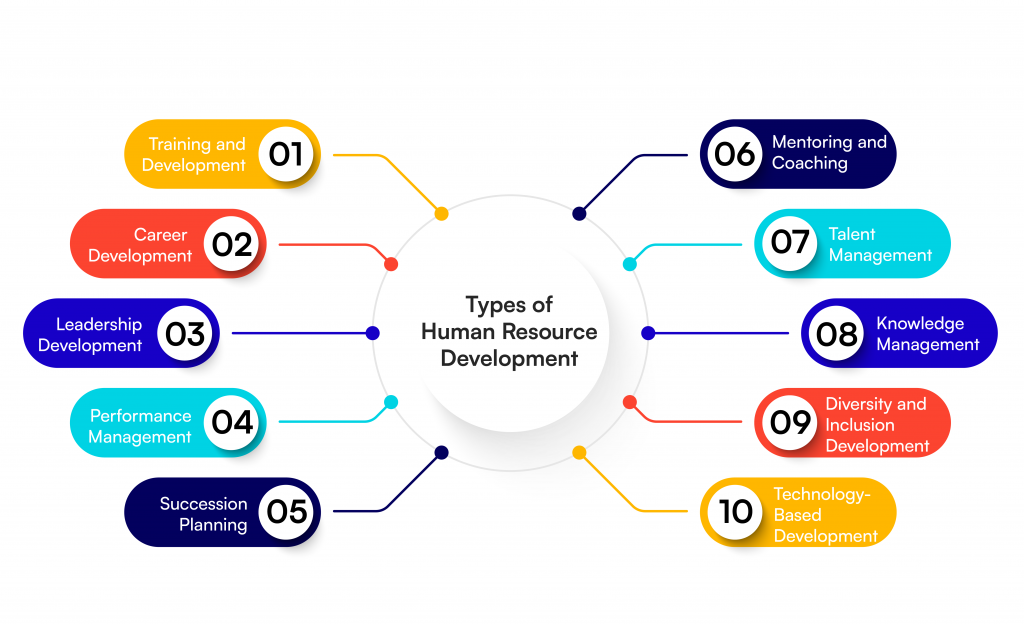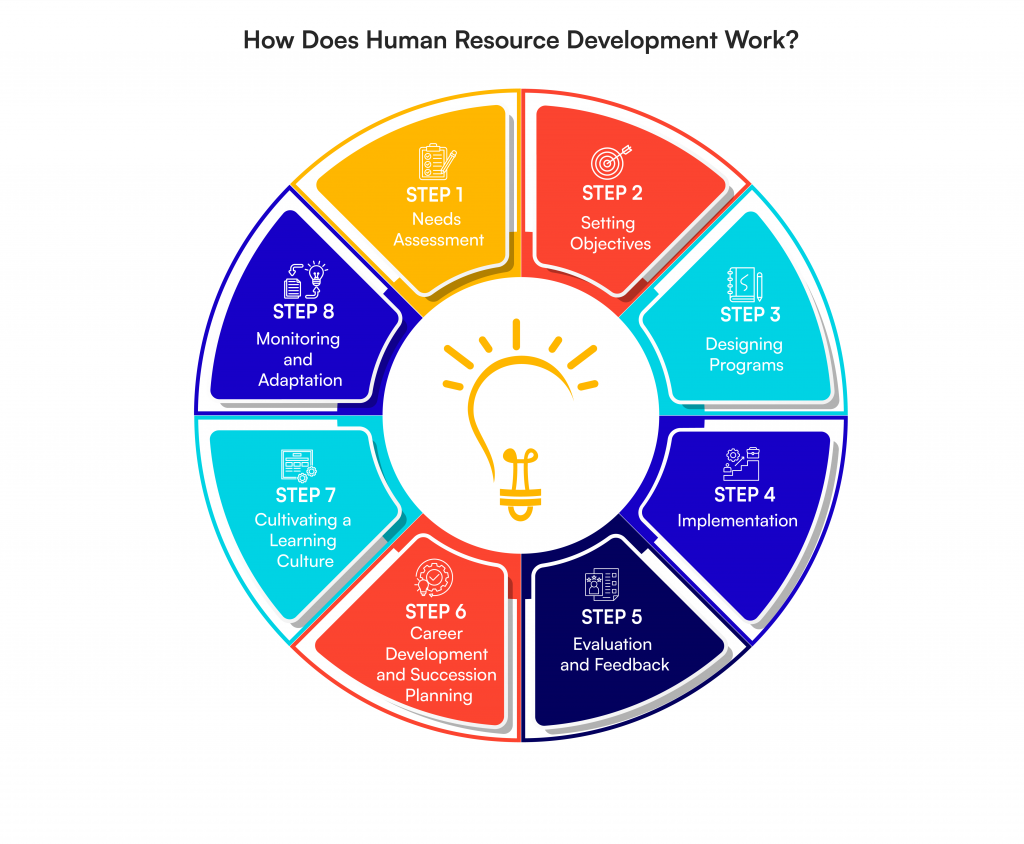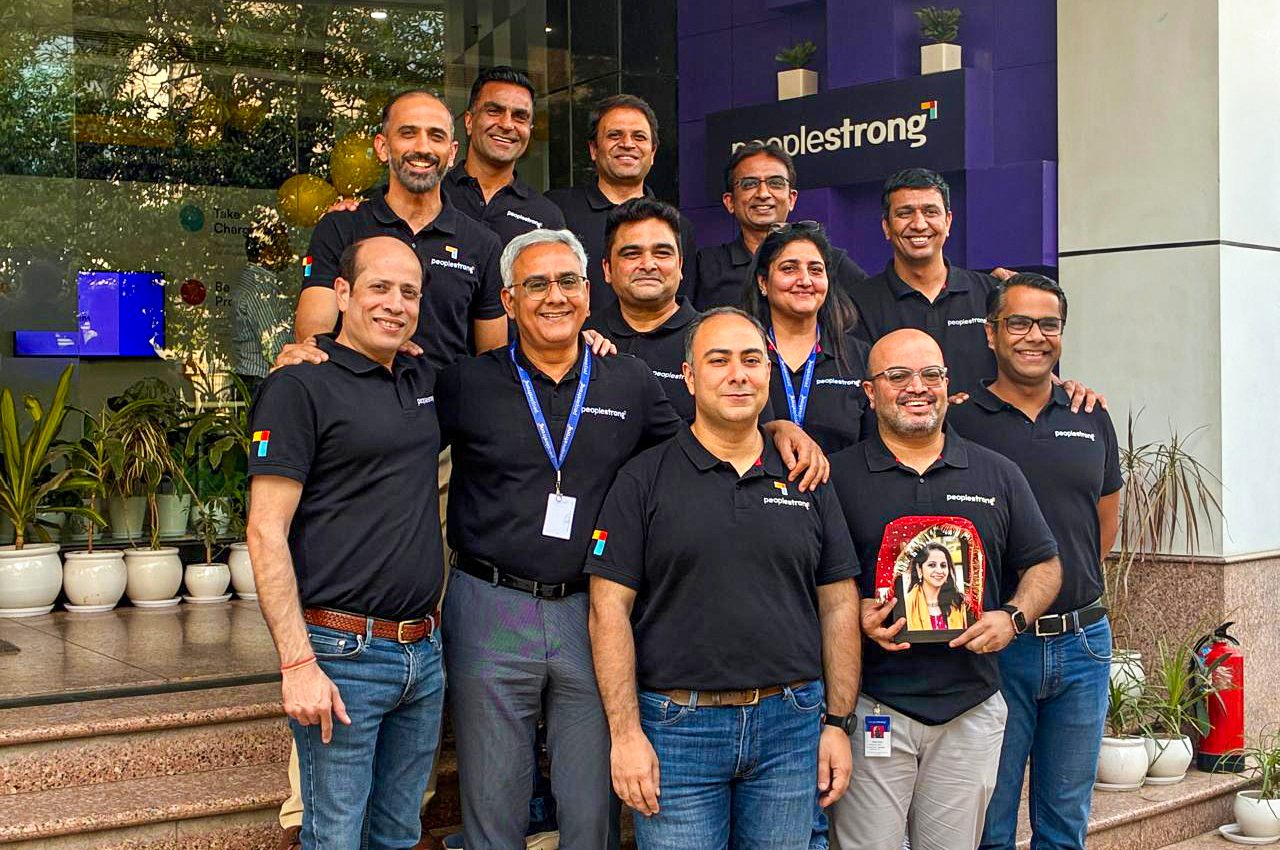The success of any organization depends on the capabilities of its people. Human Resource Development (HRD) plays a crucial role in turning employees into the driving force behind a company’s growth. Through continuous learning and targeted development programs, HRD ensures that the workforce is always ready to meet new challenges and seize opportunities.
HRD is not just about training—it’s about creating a culture where development is prioritized. Companies that invest in HRD see tangible results: those with strong employee development programs enjoy a 15% higher profit margin and a 34% increase in employee retention compared to their peers. These numbers clearly show that when employees grow, the organization prospers.
Whether it’s enhancing specific skills, developing leadership capabilities, or providing career progression pathways, HRD equips employees with the tools they need to excel. It fosters a work environment where adaptability and innovation flourish, enabling both individuals and the organization to achieve their highest potential.
What is Human Resource Development (HRD)?
Human Resource Development (HRD) is a strategic approach aimed at enhancing employees’ skills, knowledge, and abilities. It goes beyond training, encompassing activities that foster personal and professional growth.
HRD ensures employees are equipped for current roles and future challenges by integrating training, career development, performance management, and leadership cultivation.
This alignment of employee growth with organizational goals is vital for long-term success. HRD initiatives may include structured learning, mentorship, leadership development, and digital tools, fostering a culture of continuous improvement where employees are encouraged to grow and pursue new opportunities.
Importance of Human Resource Development (HRD)
Human Resource Development (HRD) is a critical component in building a successful organization. Its importance extends far beyond training, impacting various aspects of both employee well-being and organizational success.
1. Employee Performance and Productivity
At the core of HRD is the enhancement of employee skills and efficiency. By providing targeted training and development opportunities, organizations can significantly boost employee performance.
Research shows that companies investing in comprehensive training programs experience a 218% higher income per employee compared to those that don’t. This improvement not only benefits individual employees but also contributes to the overall efficiency of the organization.
2. Talent Retention and Engagement
HRD plays a key role in retaining top talent. Employees who feel that their growth is valued are more likely to stay with an organization. In fact, organizations with strong development programs report 59% lower turnover rates. Engaged employees are not only more productive but also more loyal, reducing turnover costs and fostering a stable workforce.
3. Adaptability and Innovation
In an environment where change is constant, adaptability is key. HRD encourages continuous learning, enabling employees to adapt to new technologies and industry shifts. Companies that foster a culture of learning are 46% more likely to be leaders in their market sectors. This commitment to ongoing development drives innovation, allowing organizations to stay ahead of the competition.
4. Succession Planning and Leadership Development
Preparing for the future is another critical aspect of HRD. By identifying and developing future leaders, HRD ensures that the organization is equipped to handle transitions smoothly. Leadership development programs can increase organizational revenue by up to 24%, as they create a pipeline of capable leaders who can guide the company toward continued success.
5. Organizational Performance
HRD contributes to the overall success of the organization. By aligning employee development with company goals, HRD helps create a workforce that is not only skilled and motivated but also deeply invested in the company’s success. This alignment leads to improved performance across the board, giving the organization a competitive edge.
Types of Human Resource Development

Human Resource Development (HRD) is a multifaceted process that encompasses various approaches to enhance the capabilities of employees and align their growth with organizational goals. Here are the key types of HRD:
- Training and Development: This is the foundation of HRD, focusing on structured learning interventions such as workshops, seminars, and e-learning courses. These programs build specific skills and knowledge that employees need to perform their jobs effectively.
- Career Development: HRD also involves providing resources and opportunities for employees to plan and advance their careers. Career development programs help employees set career goals, identify the skills needed to achieve them, and create a roadmap for progression within the organization. Companies that support career development initiatives see a noticeable improvement in employee retention.
- Leadership Development: Cultivating leadership skills is essential for building a strong leadership pipeline. Leadership development programs focus on enhancing the abilities of current and potential leaders within the organization.
- Performance Management: This type of HRD involves setting performance goals, providing regular feedback, and creating systems to monitor and enhance employee performance. Effective performance management can lead to higher engagement and overall performance.
- Succession Planning: Identifying and preparing future leaders is crucial for ensuring smooth transitions and maintaining organizational stability. Succession planning helps organizations mitigate the risks associated with key personnel departures.
- Mentoring and Coaching: Personalized guidance through mentoring and coaching is another vital aspect of HRD. These programs provide employees with the support they need to develop their skills, navigate challenges, and achieve their career goals.
- Talent Management: A strategic approach to attracting, developing, and retaining high-potential employees is essential for organizational success. Talent management involves identifying key talents, providing them with growth opportunities, and ensuring they remain engaged and committed to the organization.
- Knowledge Management: Capturing, sharing, and utilizing organizational knowledge is critical in an information-driven era. Knowledge management initiatives help ensure that valuable insights and expertise are accessible to all employees, fostering a culture of continuous learning.
- Diversity and Inclusion Development: Training programs focused on diversity and inclusion are increasingly important in fostering an inclusive workplace. These initiatives help create a culture where all employees feel valued and respected.
- Technology-Based Development: Leveraging digital tools for learning and development is a growing trend in HRD. Technology-based development, such as Learning Management Systems (LMS) and e-learning platforms, allows organizations to deliver scalable and interactive learning experiences.
How Does Human Resource Development Work?
Human Resource Development (HRD) is a strategic process that nurtures employee growth while aligning with organizational goals. This process unfolds through several key steps:

Step 1: Needs Assessment
The journey begins with understanding where the organization stands in terms of skills and where it needs to go. This involves a deep dive into current employee capabilities versus the skills required for success.
By using tools like performance reviews, employee surveys, and direct feedback, HR professionals can pinpoint specific areas for development, ensuring that efforts are targeted and impactful.
Step 3: Setting Objectives
With the gaps identified, clear and actionable goals are set. These objectives are carefully crafted to support the broader business strategy.
For instance, if an organization aims to enhance its innovation capacity, the focus might be on boosting creative problem-solving and technical expertise among its employees. Setting these objectives provides a roadmap for the development initiatives that follow.
Step 3: Designing Programs
Next comes the design phase, where customized training and development programs are crafted. Whether it’s through immersive workshops, interactive e-learning modules, or personalized mentoring sessions, the aim is to create programs that resonate with employees and address their specific needs.
This phase also involves selecting the most effective delivery methods, ensuring that learning is accessible and engaging.
Step 4: Implementation
Effective execution is crucial for HRD success. This involves rolling out the programs in a way that captures employees’ attention and motivates them to participate fully. Implementation isn’t just about scheduling sessions—it’s about creating an environment where employees are excited to learn and grow.
This might mean integrating development activities into daily workflows or offering flexible learning options that fit around busy schedules.
Step 5: Evaluation and Feedback
After the programs are in place, it’s essential to measure their effectiveness. This doesn’t just mean checking attendance or completion rates. It’s about understanding the real impact on employee skills and behavior.
Surveys, assessments, and performance metrics offer insights into how well the programs are working. Importantly, gathering feedback directly from employees helps fine-tune future initiatives, making HRD an evolving, responsive process.
Suggested Read:
20+ Employee Performance Metrics to Track
Step 6: Career Development and Succession Planning
HRD isn’t just about the here and now—it’s also about preparing for the future. By focusing on career development and succession planning, HRD ensures that employees have clear pathways for growth within the organization.
This might involve creating mentorship programs, offering leadership training, or simply providing the tools employees need to take the next step in their careers. The goal is to build a pipeline of talent ready to step into critical roles as the organization grows and evolves.
Step 7: Cultivating a Learning Culture
A successful HRD strategy fosters a culture where continuous learning is the norm. This means encouraging employees to take ownership of their development and supporting them with the resources and opportunities they need.
A learning culture is one where curiosity is encouraged, and innovation thrives—a culture that not only adapts to change but drives it.
Step 8: Monitoring and Adaptation
Finally, HRD is a dynamic process that requires regular review and adjustment. As business needs change and new challenges emerge, HRD programs must be flexible enough to evolve. Continuous monitoring ensures that the development efforts remain aligned with organizational goals and continue to deliver value over time.
Use of Technology in Human Resource Development
Integrating technology into Human Resource Development (HRD) is now essential. It boosts the efficiency, accessibility, and effectiveness of development programs, offering innovative ways to empower the workforce.
1. Learning Management Systems (LMS)
LMS platforms centralize training, offering employees easy access to learning resources and progress tracking. These systems deliver tailored learning experiences at scale, increasing employee engagement by 21%.
PeopleStrong’s intelligent learning platform takes employee development beyond traditional upskilling. With AI-powered personalized learning paths, employees receive training tailored to their skills, interests, and career goals. Delivered across multiple platforms, this ensures continuous improvement and a seamless learning experience from Day 1.
2. E-Learning and Online Training
E-learning has revolutionized employee training, offering flexibility and convenience. Employees can access courses anytime, anywhere, leading to higher participation and a personalized learning experience. Interactive modules and quizzes cater to various learning styles, making training more effective.
3. Performance Management Systems
Technology-driven performance management systems automate goal-setting, feedback, and tracking, providing real-time insights into employee performance. This automation reduces administrative tasks and ensures consistency.
PeopleStrong’s performance management system aligns employee goals with business objectives, offering 360-degree feedback, real-time tracking, and powerful dashboards that support meaningful development conversations and eliminate bias.
4. Talent Acquisition and Management
Technology streamlines hiring and talent management. Tools like applicant tracking systems (ATS) simplify the hiring process, while talent management software tracks employee development.
PeopleStrong’s talent acquisition platform enhances recruitment and onboarding, offering a seamless experience for both recruiters and candidates, keeping your company competitive.
5. Data Analytics and HR Metrics
Data analytics in HRD provides insights into training effectiveness, engagement, and performance trends, enabling data-driven adjustments to HRD strategies. This ensures development programs align with business goals and deliver measurable results.
6. Employee Engagement and Communication Tools
Technology also enhances communication and engagement through intranets, chat tools, and social networks, fostering collaboration and informed, engaged employees. As technology evolves, its role in HRD will continue to expand, driving more effective and scalable development programs.
Conclusion
Human Resource Development (HRD) is crucial for fostering continuous learning and growth within an organization. Beyond training, HRD involves strategic programs in career advancement, leadership development, and technology, directly enhancing employee engagement, productivity, and retention.
Platforms like PeopleStrong’s AI-powered solutions elevate HRD by providing personalized learning, efficient performance management, and data-driven insights. By investing in HRD, organizations transform from within, driving long-term success, innovation, and a strong competitive edge.
Empower your workforce, drive meaningful outcomes, and position your organization for future success. Want to know how PeopleStrong can transform your Human Resource Development operations? Connect with our team now.












